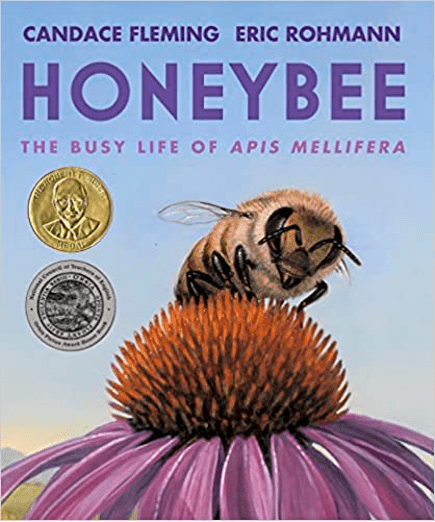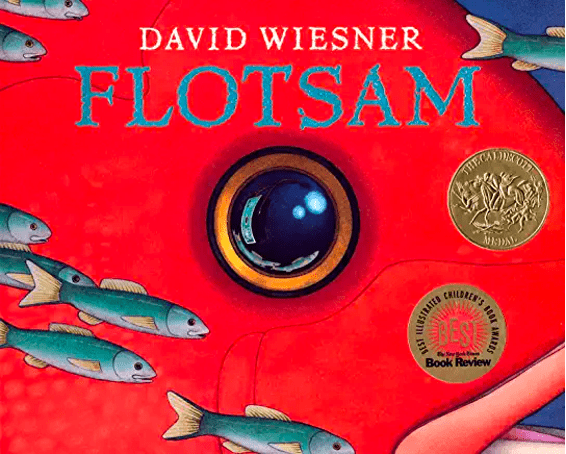This past January, the annual children’s book awards were announced for 2022. We already have a few of the winners in our collection, and many more are on order. Once they are all in, I will share a list of those books receiving recognition. Meanwhile, I thought it might be worthwhile to revisit some of the past award books. Our book cart will be devoted to such in March and April. And below, I have focused on three past medal winners.

1995 winner of the Newbery Medal awarded to the “author of the most distinguished contribution to American literature for children.”
Sharon Creech is the author of twenty-one books for young people, nine of which are in our collection. In Walk Two Moons, Creech seamlessly creates two tales, one within the other. We are introduced to Salamanca (aka Sal), our narrator, as she journeys from Ohio to Lewiston, Idaho, with her Gram and Gramps in order to see her Momma who had left home over a year ago. The goal was to be there by her mother’s birthday, stopping at the same tourist sites her mother had.
In order to pass the time, Gram suggests to Salamanca that she spin a story to entertain them. Sal lands upon sharing a tale about her friend, Phoebe Winterbottom, and her disappearing mother and the lunatic. Sal is an engaging thirteen-year-old who conveys her own experiences as well as Phoebe’s with honesty, humor, and sensitivity. Each of the girl’s journeys, both physically and emotionally, encompass family ties, love and loss, along with some unforeseen turn of events. In the end, both Sal and Phoebe come to an understanding of the proverb, “Don’t judge a man until you’ve walked two moons in his moccasins.”

2021 winner of the Robert E. Sibert Medal awarded to the “author and illustrator of the most distinguished informational book.”
It is no wonder that Honeybee was honored with the Sibert Medal. Every aspect of this beautifully constructed book is outstanding. The artwork, done in oils, is striking. Our hero, Apis mellifera, the worker honeybee, is shown in magnified detail as she performs her life tasks. Beginning with her emergence from her single cell in the bee colony’s wax comb, we follow her as she matures and performs her many assignments as part of a functioning bee society.
Assuming the reader naturally expects Apis to be ready to take flight, the narration on the first several pages ends with the inquiry, “Flying?” But with the turn of the page, we find that Apis is engaged in yet another vital responsibility from nursing the larvae to building the wax comb’s cells. When at last she does take off to fly, the reader is treated to a gorgeous center-fold spread showing Apis flying over a colorful flowered meadow. The portrayal of the honeybee’s days continues, leaving the reader in awe of the wonders of nature. The final pages include a detailed drawing examining the body parts of a worker honeybee and their functions.
In closing, Fleming adds a note regarding the plight of today’s bee population and how each of us can play a role in helping to reverse this trend. Any young reader, or for that matter, any adult, who becomes immersed in this stunning book, will no longer look upon a honeybee in the same way.

2007 winner of the Caldecott Medal awarded to “the artist of the most distinguished American picture book for children.”
Flotsam is one of many of David Wiesner’s outstanding wordless picture books. It is not only filled with Wiesner’s beautifully-produced watercolor art but takes us on a most creative and imaginative “journey.” The book opens with a young boy—perhaps a tween—who is at the beach with his buddies. His friends are reading, but he is lying on his towel intently examining a hermit crab with a magnifying glass. He then spies a fiddler crab by the water’s edge. As he gets on his hands and knees to inspect it, a large wave crashes over the two of them. When the ocean water recedes, the boy spies a camera covered with barnacles—a “Melville underwater camera.” Upon opening it, he discovers a roll of film which he rushes to a nearby photo shop. (The idea of a roll of film may require an adult to relate how pictures were once taken!)
Here the magic begins, once he picks up his packet of developed photos. Fantastical underwater scenes greet him, one after another. But then the focus turns. He finds a picture of a young girl holding a picture of a boy, who is holding a picture of another boy, and so on. Using a magnifying glass and then a microscope, our beach boy travels back into time, with each new face. It is not long before the boy decides to be a part of this time-travel journey, and then he sets the camera free into the waves. Where does this tale and the camera take us? With full-page spreads along with pages filled with smaller consecutive framed art, Wiesner takes us on a memorable odyssey of the imagination anchored in a realistic setting.